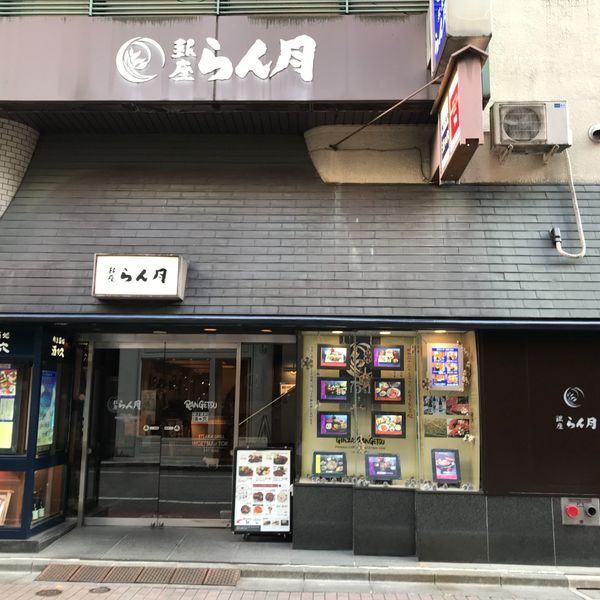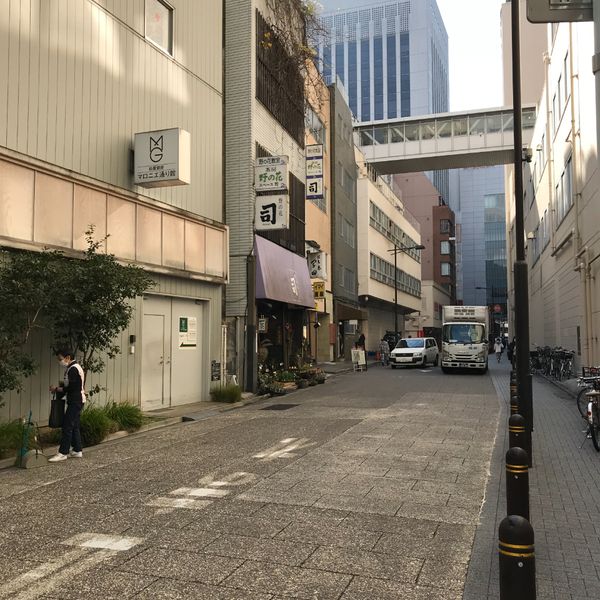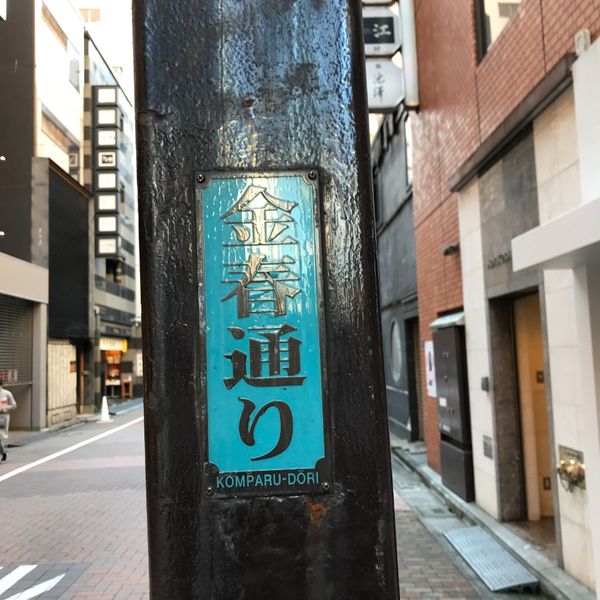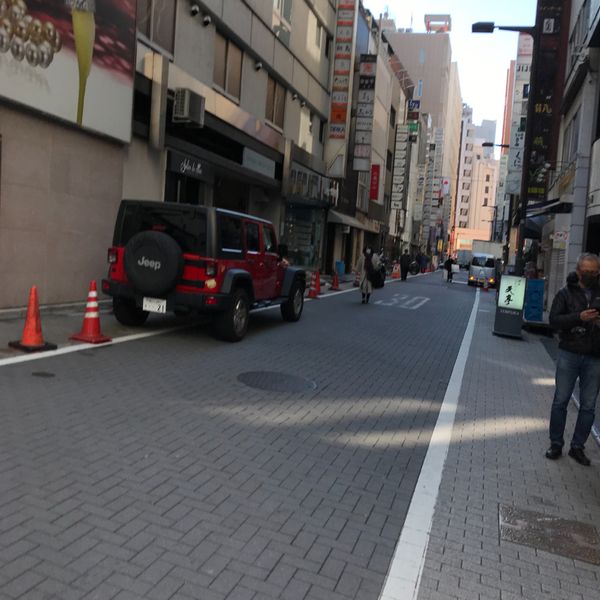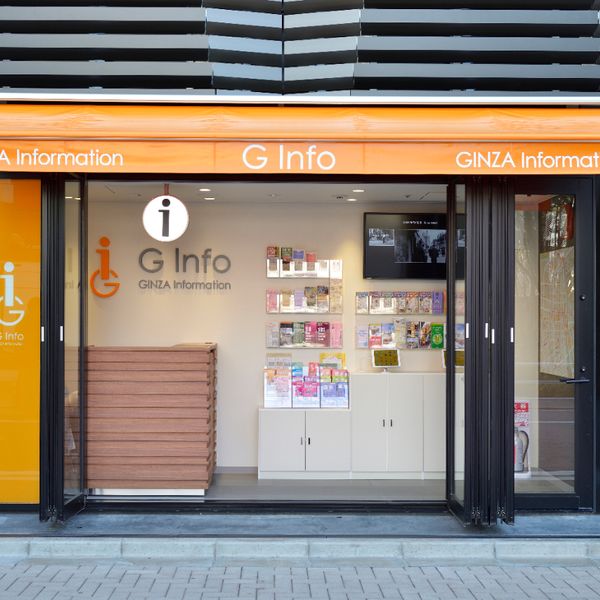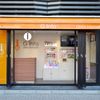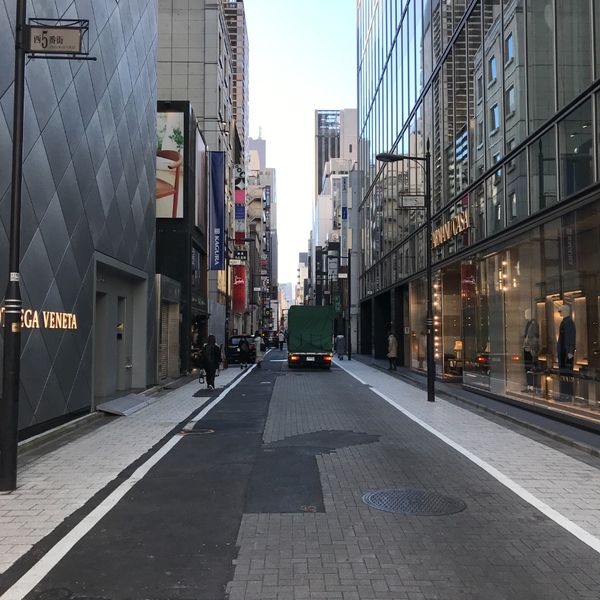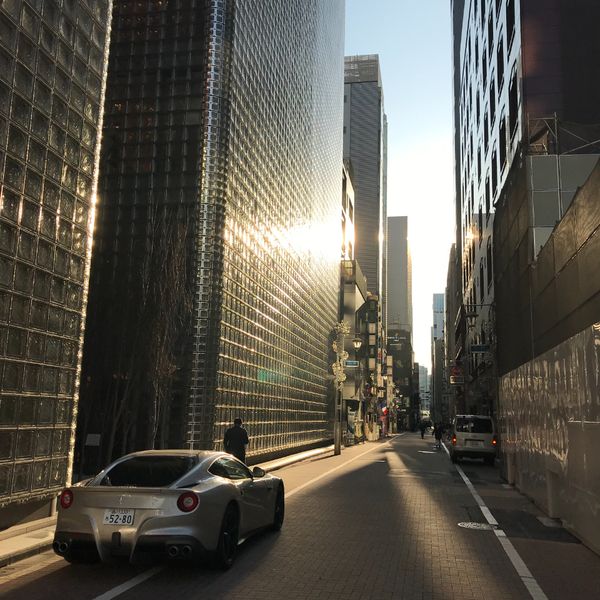GINZA NICKNAMED 11 STREETS~Walk Ginza, Feel Ginza.
Have you ever walked through Ginza and noticed there're both "streets that have sidewalks with steps"and "streets with no sidewalk"? Many of the streets that have sidewalks ,are extremely old streets first developed in Japan by the Ginza district in 1612. In contrast, ”streets with no side walk" are new streets established as shindo (new street) as a portion of a gutter system. This type of street was established as a fire prevention measure in Tokyo after the Great Fire of Meireki in1657. ginza.jp/en/tourist-map
関連するめっけブック
関連するめっけブック
紹介スポット
- 23件Part of the Ginza Rangetsu store family, this hidden gem is a place for those in the know to unwind You can download the pamphlet in PDF through this link. ginza.jp/en/tourist-map It is available at the tourist centers around Ginza as well. ginza.jp/en/townguide/touristo...
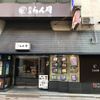
【Recommended lunch spot】Japanese sake shop
Part of the Ginza Rangetsu store family, this hidden gem is a place for those in the know to unwind You can download the pamphlet in PDF through this link. ginza.jp/en/tourist-map It is available at the tourist centers around Ginza as well. ginza.jp/en/townguide/touristo...
Authentic curry house recognized by curry enthusiasts You can download the pamphlet in PDF through this link. ginza.jp/en/tourist-map It is available at the tourist centers around Ginza as well. ginza.jp/en/townguide/touristo...

【Recommended lunch spot】Authentic curry
Authentic curry house recognized by curry enthusiasts You can download the pamphlet in PDF through this link. ginza.jp/en/tourist-map It is available at the tourist centers around Ginza as well. ginza.jp/en/townguide/touristo...
Azuma-dori St. (Ginza 1 through 5-Chome)
Azuma means east. Many places in Ginza contains words meaning east and west
Year of Naming: 1988 The characters “東” (East) and “西” (West) are used in the names of Ginza town associations. This dates back to 1930, when the former town names were consolidated, and the area was divided into “East Ginza,” “Ginza,” and “West Ginza.” This street name comes from the present-day “Higashi Chokai” (East Town Association) , and the Azuma Odori (Azuma being another reading for the “East” kanji character. Azuma Odori is a performance put on by the Tokyo Shimbashi Union (a union for geisha and traditional Japanese restaurants). This nomenclature conveys the stylish aspect of Ginza. Mihara Koji Lane, which branches off of Azuma-dori, is where Azuma Inari Shrine is located. You can download the pamphlet in PDF through this link. ginza.jp/en/tourist-map It is available at the tourist centers around Ginza as well. ginza.jp/en/townguide/touristo...
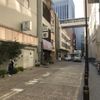
Azuma means east. Many places in Ginza contains words meaning east and west
Year of Naming: 1988 The characters “東” (East) and “西” (West) are used in the names of Ginza town associations. This dates back to 1930, when the former town names were consolidated, and the area was divided into “East Ginza,” “Ginza,” and “West Ginza.” This street name comes from the present-day “Higashi Chokai” (East Town Association) , and the Azuma Odori (Azuma being another reading for the “East” kanji character. Azuma Odori is a performance put on by the Tokyo Shimbashi Union (a union for geisha and traditional Japanese restaurants). This nomenclature conveys the stylish aspect of Ginza. Mihara Koji Lane, which branches off of Azuma-dori, is where Azuma Inari Shrine is located. You can download the pamphlet in PDF through this link. ginza.jp/en/tourist-map It is available at the tourist centers around Ginza as well. ginza.jp/en/townguide/touristo...
Konparu-dori St. (Ginza 8-Chome)
The street where the festival of Takigi Noh is held every summer
Year of Naming: 1988 The grand residences of Noh theatre performers directly affiliated with the Edo shogunate were outside the jurisdiction of the town. The Konparu Residence once located at Ginza 8-Chome was relocated to Kojimachi Zenkokujidani (present-day 3/4-Chome Kojimachi, Chiyoda ward), however the former site became a kagai district utilizing special privilege. The geisha that worked there were known as “Konparu Geisha.” Once Japan entered its Meiji era (1868 onwards), the area became characterized by brick buildings, but this Konparu Geisha district continued to operate. The Great Kantō Earthquake of 1923 ignited a fire that burnt the entire area to the ground, sparing just a single brick wall. This brick wall was dug up at a building construction site in 1988 and part of it used to erect a monument dedicated to the former brick city area on Konparu-dori. On hot summer days, Konparu-dori transforms into a Noh theatre stage hosting Takigi-noh, or night theatre, making the name “Konparu” truly shine. You can download the pamphlet in PDF through this link. ginza.jp/en/tourist-map It is available at the tourist centers around Ginza as well. ginza.jp/en/townguide/touristo...
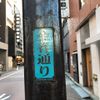
The street where the festival of Takigi Noh is held every summer
Year of Naming: 1988 The grand residences of Noh theatre performers directly affiliated with the Edo shogunate were outside the jurisdiction of the town. The Konparu Residence once located at Ginza 8-Chome was relocated to Kojimachi Zenkokujidani (present-day 3/4-Chome Kojimachi, Chiyoda ward), however the former site became a kagai district utilizing special privilege. The geisha that worked there were known as “Konparu Geisha.” Once Japan entered its Meiji era (1868 onwards), the area became characterized by brick buildings, but this Konparu Geisha district continued to operate. The Great Kantō Earthquake of 1923 ignited a fire that burnt the entire area to the ground, sparing just a single brick wall. This brick wall was dug up at a building construction site in 1988 and part of it used to erect a monument dedicated to the former brick city area on Konparu-dori. On hot summer days, Konparu-dori transforms into a Noh theatre stage hosting Takigi-noh, or night theatre, making the name “Konparu” truly shine. You can download the pamphlet in PDF through this link. ginza.jp/en/tourist-map It is available at the tourist centers around Ginza as well. ginza.jp/en/townguide/touristo...
Kenban-dori St. (Ginza 8-Chome)
The street was named after words related to Geisha culture
Year of Naming: 2009 In the late Edo Period (mid-19th century), Konparu-dori and Kenban-dori in Ginza 8-Chome were lined with geisha houses. “Kenban” had an administrative role of overseeing the kagai and still exists today in Shinbashi Kaikan Building on the corner where Hanatsubaki-dori and Kenban-dori intersect. It wasn’t until relatively later in 2009 that the name Kenban-dori was settled upon as a nickname for the Chuo ward street, however people have warmed to it, as though the name has been used since long ago. You can download the pamphlet in PDF through this link. ginza.jp/en/tourist-map It is available at the tourist centers around Ginza as well. ginza.jp/en/townguide/touristo...
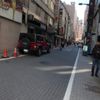
The street was named after words related to Geisha culture
Year of Naming: 2009 In the late Edo Period (mid-19th century), Konparu-dori and Kenban-dori in Ginza 8-Chome were lined with geisha houses. “Kenban” had an administrative role of overseeing the kagai and still exists today in Shinbashi Kaikan Building on the corner where Hanatsubaki-dori and Kenban-dori intersect. It wasn’t until relatively later in 2009 that the name Kenban-dori was settled upon as a nickname for the Chuo ward street, however people have warmed to it, as though the name has been used since long ago. You can download the pamphlet in PDF through this link. ginza.jp/en/tourist-map It is available at the tourist centers around Ginza as well. ginza.jp/en/townguide/touristo...
Tourist Information Center
Ginza Suzuran-dori St. (Ginza 5 through 7-Chome)
A street to enjoy a different atmosphere from the main street in Ginza
Year of Naming: 1988 Many streets in Japan include the name “Suzuran,” which means “Lily of the Valley” in English. However, the “Suzuran-dori” situated behind Ginza-dori stands out from the rest as the location of various festivals and events every year. With its occasions of live music performances and stalls lining the street like a temple festival; Suzuran-dori condenses the front and back of Ginza in one despite being a small street. Often, Suzuran-dori becomes a pedestrian-priority zone in the afternoon. As if in conflict with its parallel street of Ginza-dori, Suzuran-dori can be described as being powerful in its own unique way. You can download the pamphlet in PDF through this link. ginza.jp/en/tourist-map It is available at the tourist centers around Ginza as well. ginza.jp/en/townguide/touristo...
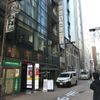
A street to enjoy a different atmosphere from the main street in Ginza
Year of Naming: 1988 Many streets in Japan include the name “Suzuran,” which means “Lily of the Valley” in English. However, the “Suzuran-dori” situated behind Ginza-dori stands out from the rest as the location of various festivals and events every year. With its occasions of live music performances and stalls lining the street like a temple festival; Suzuran-dori condenses the front and back of Ginza in one despite being a small street. Often, Suzuran-dori becomes a pedestrian-priority zone in the afternoon. As if in conflict with its parallel street of Ginza-dori, Suzuran-dori can be described as being powerful in its own unique way. You can download the pamphlet in PDF through this link. ginza.jp/en/tourist-map It is available at the tourist centers around Ginza as well. ginza.jp/en/townguide/touristo...
Nishi Gobangai-dori St. (Ginza 5-Chome)
Gobangai means 5th Avenue, like its namesake street from New York.
Year of Naming: 1988 The classic film, Breakfast at Tiffany’s, starring Audrey Hepburn was released in 1961. The opening scene of the movie, in which Audrey Hepburn enjoys breakfast while window shopping at Tiffany’s on New York’s Fifth Avenue is unforgettable. No doubt somebody shouted out “We must name this street Gobangai! (Fifth Avenue)”. The street, having its name finalized even earlier than the opening of the first Tiffany & Co. on Ginza-dori, made Ginza-dori feel like New York’s “Fifth Avenue,” and was also given the name “Nishi” (West) due to its location in West Ginza. You can download the pamphlet in PDF through this link. ginza.jp/en/tourist-map It is available at the tourist centers around Ginza as well. ginza.jp/en/townguide/touristo...
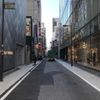
Gobangai means 5th Avenue, like its namesake street from New York.
Year of Naming: 1988 The classic film, Breakfast at Tiffany’s, starring Audrey Hepburn was released in 1961. The opening scene of the movie, in which Audrey Hepburn enjoys breakfast while window shopping at Tiffany’s on New York’s Fifth Avenue is unforgettable. No doubt somebody shouted out “We must name this street Gobangai! (Fifth Avenue)”. The street, having its name finalized even earlier than the opening of the first Tiffany & Co. on Ginza-dori, made Ginza-dori feel like New York’s “Fifth Avenue,” and was also given the name “Nishi” (West) due to its location in West Ginza. You can download the pamphlet in PDF through this link. ginza.jp/en/tourist-map It is available at the tourist centers around Ginza as well. ginza.jp/en/townguide/touristo...
Year of Naming: 1988 “SONY-dori” earned its name due to the fact that the Sony Building used to be located here and because Sony Corporation invested a significant sum to improve the streetscape here. It might be fun to think about the deeply-rooted ties between various companies and the Ginza district. You can download the pamphlet in PDF through this link. ginza.jp/en/tourist-map It is available at the tourist centers around Ginza as well. ginza.jp/en/townguide/touristo...

A street named after the Sony Building.
Year of Naming: 1988 “SONY-dori” earned its name due to the fact that the Sony Building used to be located here and because Sony Corporation invested a significant sum to improve the streetscape here. It might be fun to think about the deeply-rooted ties between various companies and the Ginza district. You can download the pamphlet in PDF through this link. ginza.jp/en/tourist-map It is available at the tourist centers around Ginza as well. ginza.jp/en/townguide/touristo...
Sukiya-dori St. (Ginza 5 through 6-Chome)
A street named after a former town named Sukiyacho.
Year of Naming: 2009 Sukiya-dori was abolished once after the Great Fire of Meireki and then restored during the phase of brick city construction. In the early Edo Period (17th century), Sukiyaki-dori was a magnificent street on par with the likes of Ginza-dori and Namiki-dori, making it worthy of the “dori” street status. Named after the old town name “Sukiya-cho,” the title of “Sukiya-dori” does seem to be a most fitting one for this street. You can download the pamphlet in PDF through this link. ginza.jp/en/tourist-map It is available at the tourist centers around Ginza as well. ginza.jp/en/townguide/touristo...
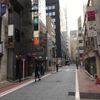
A street named after a former town named Sukiyacho.
Year of Naming: 2009 Sukiya-dori was abolished once after the Great Fire of Meireki and then restored during the phase of brick city construction. In the early Edo Period (17th century), Sukiyaki-dori was a magnificent street on par with the likes of Ginza-dori and Namiki-dori, making it worthy of the “dori” street status. Named after the old town name “Sukiya-cho,” the title of “Sukiya-dori” does seem to be a most fitting one for this street. You can download the pamphlet in PDF through this link. ginza.jp/en/tourist-map It is available at the tourist centers around Ginza as well. ginza.jp/en/townguide/touristo...
